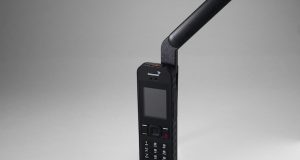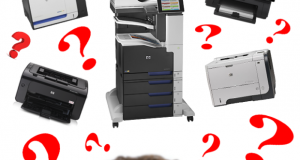
Smartphones and tablets powered by Google’s Android software are devouring the mobile gadget market, eating into Apple’s turf by feeding appetites for innovation and low prices, analysts say.
The Android operating system powered nearly three out of four smartphones shipped worldwide in the recently ended quarter as the mobile platform dominated the market, according to industry trackers at IDC.
“Android has been one of the primary growth engines of the smartphone market since it was launched in 2008,” said IDC’s mobile phones research manager Ramon Llamas.
“In every year since then, Android has effectively outpaced the market and taken market share from the competition.”
In tablets, Apple’s market share has fallen to just over 50 percent from 65 percent in the second quarter as Android devices gain ground, according to IDC figures.
“Having a lot of people building a lot of things covering a lot of price points with multiple brands in multiple places makes a big difference,” said NPD Group analyst Stephen Baker.
“Variety is strength when it comes to moving units.”
Android smartphones shipments surged to 136 million, topping those in the same three-month period last year by slightly more than 90 percent, IDC reported.
Samsung’s Galaxy S3 overtook Apple’s iPhone 4S in the third quarter to give the South Korean firm the world’s best-selling smartphone model for the first time ever, according to research firm Strategy Analytics.
“The pace of innovation in Android is faster than Apple,” said Gartner vice president of mobile computing Ken Dulaney. “They are just trying harder; Apple is way behind in that area.”
Android is benefiting from being an “open-source” platform that gadget makers use free of charge and improve as they deem fit, providing Google with insights along the way.
Apple tightly controls its products from the software to the hardware and even the online shop for music, books, games or other content.
“What you get with Android is this incredible feedback loop with developers, equipment makers, customers and designers,” Dulaney said.
“At Apple, as long as they have a great vision internally it is fine but they don’t have the feedback Android does.”
Having thousands of different Android devices vying for consumers’ cash is a strength when it comes to market share but puts hardware makers into a fiercely competitive arena, Baker noted.
“Other than Samsung, I don’t know if other Android guys are making money,” the analyst said.
Google gives Android away free, but the platform is crafted to make it easy for people to use the California Internet titan’s money-making services such as search and maps, and get content at its online Google Play shop.
Forrester analyst Charles Golvin said that forces powering Android momentum include changing demographics of smartphone buyers.
Early adopters of smartphones focused more on new technology than on price, but the devices have gone mainstream with cost increasingly important to shoppers, according to Golvin.
“People are more inclined toward the Android platform because there is more choice and most of that choice is low price,” Golvin said.
The open nature of Android and the myriad models offered by gadget makers serve as a “double-edged sword,” warned the analyst.
Apple pushes annual updates of iOS mobile operating system out to its devices, while new versions of Android hit more often but must get through hardware makers and telecom services to get onto people’s handsets.
“You have this lengthy chain of intermediaries who are delaying the delivery of that new software and its innovations to existing devices in the market,” Golvin said.
He backed his point by noting that many Android devices in use still run on generations-old versions of the operating system.
Android gadget variety can also make it tough to design accessories or even “apps” that can be used across the array of devices.
For its part, Google has done an excellent job of improving the “ecosystem” of music, films, apps, books and more available for Android-powered devices, according to analysts.
In the red-hot tablet market effectively created by the iPad, strong growth is being seen by Android rivals including Amazon’s popular Kindle Fire and Nook devices from Barnes & Noble, which run custom versions of the software.
Analysts believe that the Google-backed operating system is likely to spread to typically “dumb” gizmos like appliances.
“These platforms are becoming the molecule elements for building all kinds of hybrid devices,” Dulaney said.
 Blog For Noob Random thought of a Noob Blogger
Blog For Noob Random thought of a Noob Blogger








